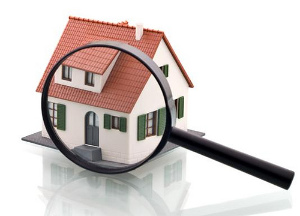
The national average asking price is up 20.2%, and the stock squeeze continues with 33.3% fewer properties available compared to June last year, new data from property website realestate.co.nz shows.
On average, Kiwi homes are costing nearly $150,000 more than they did this time last year and there aren’t any signs to suggest it will slow down, particularly as there are fewer than 14,000 homes available to buy.
In April 2008, at the height of the market, there were 60,000 houses on the market for home buyers.
Fifteen from New Zealand’s 19 regions hit 14-year record high asking prices in June, as stock challenges continue to put pressure on the property market.
The national average asking price is now $875,197 – up 20.2% from $728,328 in June 2020.
Total stock shortages continue to prove challenging for buyers, with 14-year record lows in five regions.
“This is a classic case of supply and demand,” says Vanessa Williams, a spokeswoman for realestate.co.nz.
“While the borders are closed, property remains a focus. Demand is high, but there are not enough homes to purchase,” says Williams.
The region with the greatest average asking price increase in June was the West Coast, which moved from $256,921 to $405,523 – a 57.8% jump in the past 12 months.
Although not a record high, it is the highest asking price for the region in 14 years aside from April 2020, which was skewed substantially by Covid-19 and New Zealand being in lockdown.
REINZ’s data for June shows the West Coast is the only region in New Zealand with a rental yield of more than 5%, suggesting it is the best spot for investors.
Wairarapa and the Central North Island both broke 14-year records, with average asking prices increasing by 37.1% and 35.7% respectively.
Although their asking prices still increased year-on-year, Waikato (up 11.8% to $736,070) and Marlborough (up 28.7% to $680,218) regions didn’t break records.
Central Otago/Lakes District was the only region where prices cooled year-on-year, with a -4.2% drop to $999,354.
“This region has been an outlier recently. Central Otago/Lakes District was one of the five regions that hit record stock lows this month (-34.0%), so it isn’t as if there is a surplus of properties pushing prices down,” Williams says.
District-level data paints an interesting picture: Queenstown District asking prices are down -13.4% compared to this time last year and are down by -27.5% from May 2021.
Central Otago District asking prices also dipped by -3.7% from May, although rose by 4.2% compared to last year.
Stock shortages
There were 14-year record stock shortages in Northland (-47.8%), Nelson and Bays (-57.9%), Canterbury (-48.5%), Coromandel (-59.4%) and Central Otago/Lakes District (-34.0%).
In only a handful of regions new listings rose year-on-year, including Marlborough (40.3%), the West Coast (37.8%), Gisborne (29.7%), Central Otago/Lakes District (10.1%) and Wellington (2.1%).
Addressing housing shortage
Several initiatives this year have been focused on housing stock challenges. “For example, retail banks announced incentivised interest rates available to those Kiwis looking to build,” says Williams.
“This is a step in the right direction if the country wants to get on top of the long-term stock shortage.
“Investors are being encouraged to refocus their resources into new builds rather than existing homes, and lower interest rates for those who are building or buying new are heartening signs.
“We may not see the benefit of these incentives immediately, but we’ll certainly feel the buzz of a building boom in the medium to long-term,” says Williams.





Comments
No comments yet.
Sign In to add your comment